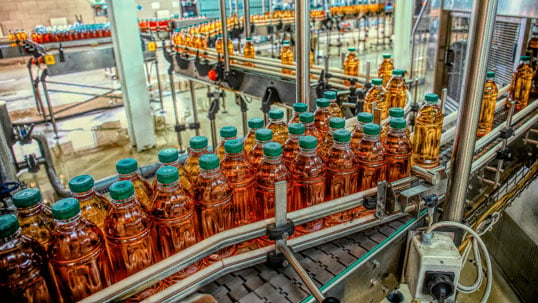This guest post is authored by Tao Shen, a product marketing manager at Honeywell Process Solutions.
If you’re working in batch manufacturing, you are painfully aware of the ever-increasing demand to produce more and more and – while you’re at it – cut costs. Well, hey, you weren’t doing much this week anyway, so you may as well increase production and lower operating costs, right?
Reducing the total cost of ownership of your distributed control system (DCS) or PLC/HMI system is one area in which you can increase profitability and efficiency. But sifting through vast amounts of technical information and weighing alternatives to find the right solution for your application can be daunting. The urgency for higher system performance has, in some instances, created pressure to implement a “do it yourself” solution in an attempt to save time and money. But the DIY method may actually cost more in the long run and can subject you and your team to unanticipated costs and risks.
In batch environments, DCS architecture has long been favored over creating a control system using PLCs. In considering these two options, price points are now more comparable than ever before, so the decision is no longer solely based on the cost of the hardware and software.
Many aspects of the architecture will factor into the decision, including network topology and performance, reliability and repeatability of the controls configuration, HMI graphics functionality, method of abnormal situation management, controls configuration, integration and interoperability, and data management.
Batch automation requires tight coordination between phases, units, recipes, and formulae. With so many diverse elements, the batch data model is the key to the solution. With recent advances in technology, all aspects of the batch automation solution can be captured in a single DCS data model. All the elements needed to manage the batch can be run in the process controller, eliminating the necessity of a PC acting as a batch server.
Because the batch would actually run in the controller – not in the server – it is closer to the process resulting in faster batch execution, tighter batch cycles, and increased throughput. If one controller goes down, redundant systems would take over without resets or a loss of the recipe which is critical in regulated industries.
Implementing new automation elements necessarily entails operator training. With the DCS solution, operators learn one system in a consistent environment so that fewer errors are made. Alarms, security, abnormal situation management, displays and control functions are all supported in one tool with no duplication in engineering.
The open architecture of the DCS also allows third-party devices and smart devices to be integrated into the same data model, incorporating your existing controllers where necessary, and making the operator view of all controllers available in a consistent fashion. This also makes training on the new system easier and faster, so that downtime is minimized. Most DCS suppliers offer advanced simulator technology to support improved performance throughout the lifecycle of the plant.
Fast project implementation, lower training costs, less configuration effort, and easier maintenance can make the DCS solution the most desirable in batch applications. The total cost of ownership is lowered resulting in the desired increased throughput and lower costs, without subjecting the system to the probability of the unforeseen costs and problems associated with attempting to integrate independent PLCs and HMI software in the “do it yourself” method. The DCS solution also takes into consideration future plant expansion and scalability, and leaves the plant in a more agile posture to better respond to business changes.
About the Author Tao Shen is a product marketing manager for Experion LX at Honeywell Process Solutions. He has more than 15 years of experience in process monitoring, control and optimization in various roles from engineering to marketing with experience on a number of different product platforms. Tao earned a PhD degree in Energy and Power Engineering from Huazhong University of Science and Technology in China and is a certificated Project Management Professional (PMP).
Tao Shen is a product marketing manager for Experion LX at Honeywell Process Solutions. He has more than 15 years of experience in process monitoring, control and optimization in various roles from engineering to marketing with experience on a number of different product platforms. Tao earned a PhD degree in Energy and Power Engineering from Huazhong University of Science and Technology in China and is a certificated Project Management Professional (PMP).
Connect with Tao:![]()
![]()



